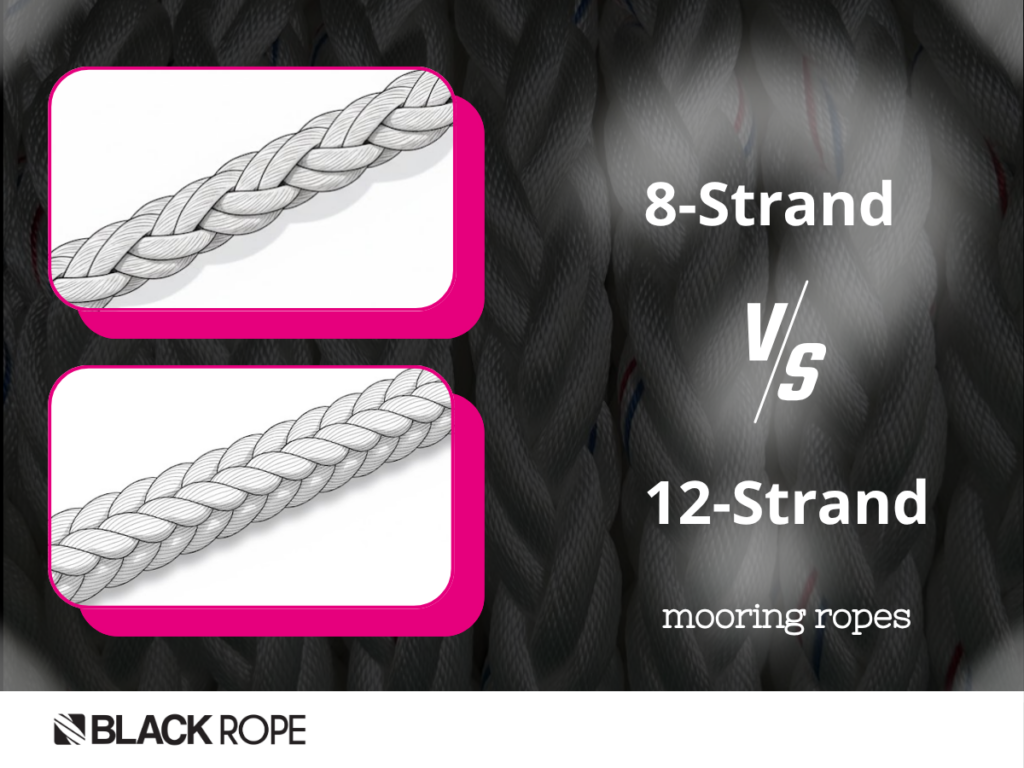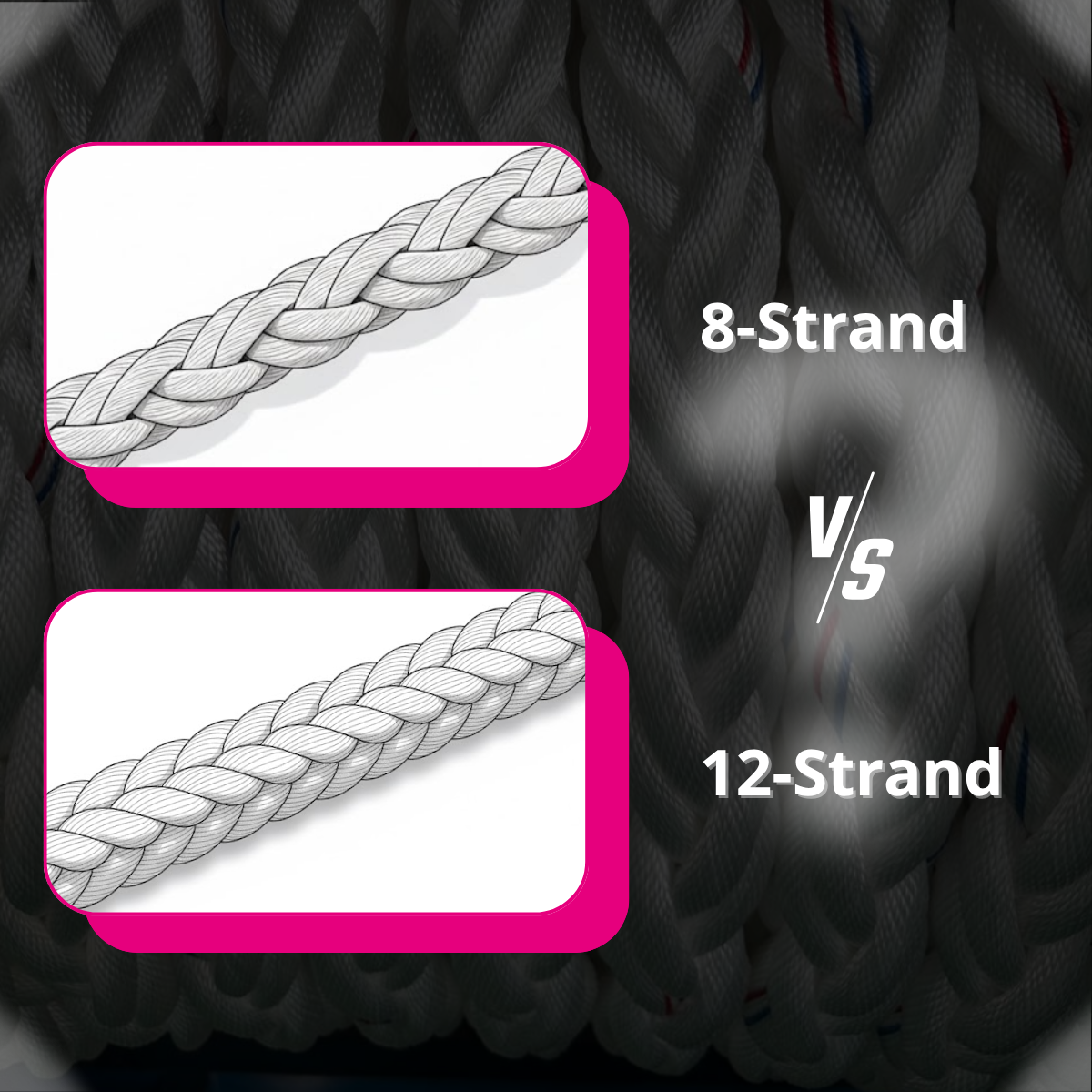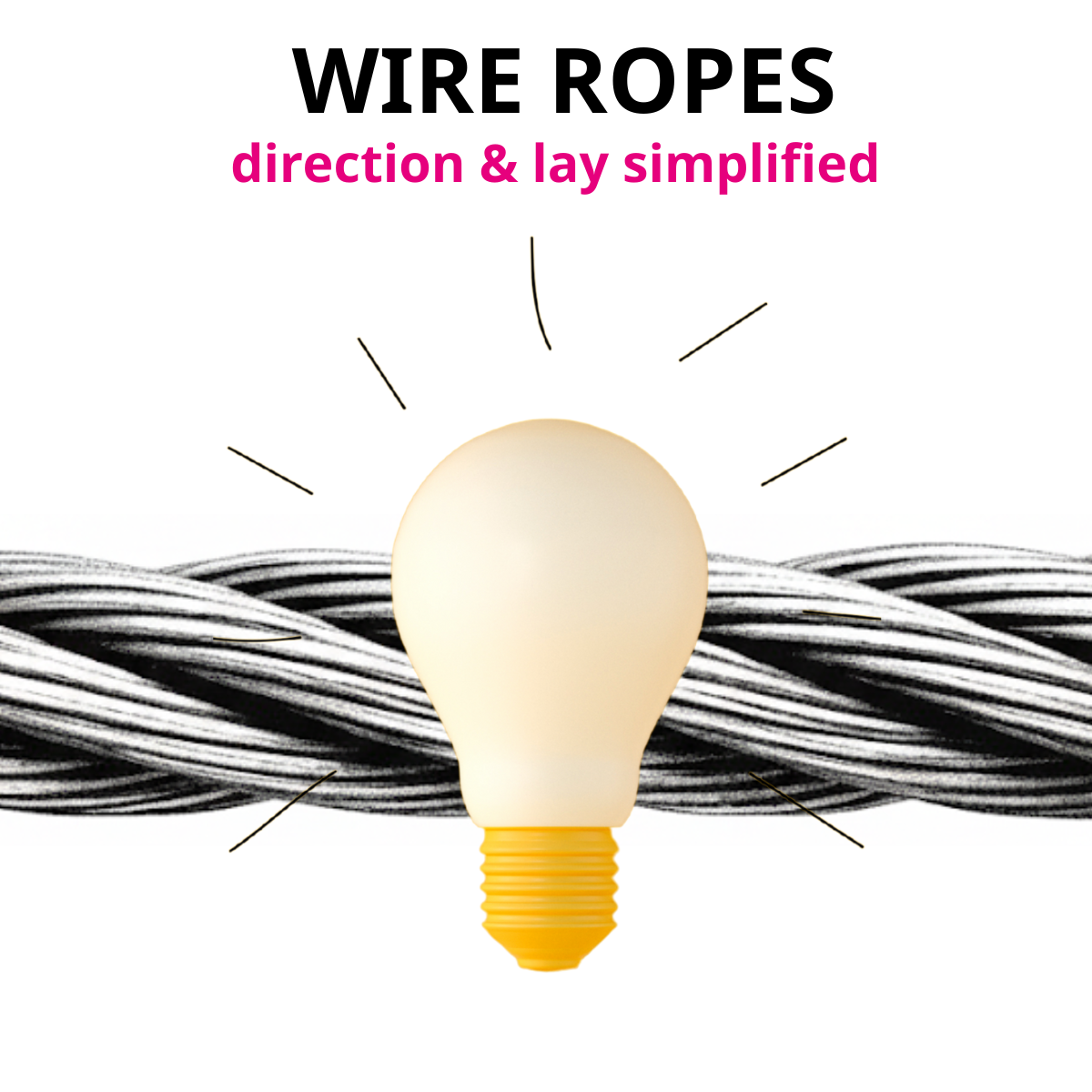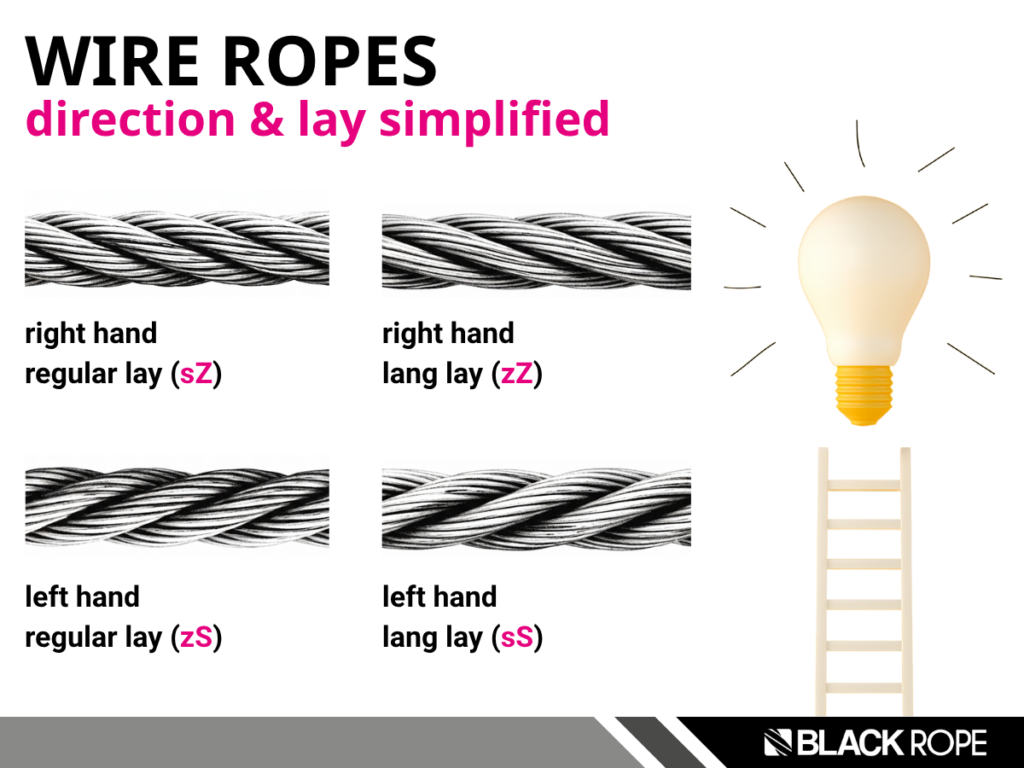Both Independent Wire Rope Core (IWRC) and Fiber Core (FC) Wire Ropes are used for mooring, but their suitability depends on the specific demands of the application. IWRC ropes are stronger and more durable, while FC ropes are more flexible with a better fatigue resistance.
ꙮ 𝐈𝐖𝐑𝐂
These wire ropes have a core made of a separate, smaller steel wire rope. This steel-on-steel construction provides a rigid & strong foundation for the outer strands.
ꙮ 𝐅𝐂
These wire ropes have a core made from either natural or synthetic fibers. The fiber core is softer and more pliable than a steel core.
➡️ 𝐏𝐑𝐎𝐒 & 𝐂𝐎𝐍𝐒
ꙮ 𝐈𝐖𝐑𝐂
✔️ 𝐇𝐢𝐠𝐡 𝐒𝐭𝐫𝐞𝐧𝐠𝐭𝐡: The steel core provides a significant increase in breaking strength, typically up to 10% higher than a comparable fiber core rope.
✔️ 𝐂𝐫𝐮𝐬𝐡 𝐑𝐞𝐬𝐢𝐬𝐭𝐚𝐧𝐜𝐞: The rigid steel core offers excellent resistance to crushing and deformation, which is crucial for applications with high pressure or multi-layer winding on drums.
✔️ 𝐇𝐞𝐚𝐭 𝐑𝐞𝐬𝐢𝐬𝐭𝐚𝐧𝐜𝐞: IWRC ropes can withstand higher temperatures, making them suitable for environments where friction or heat buildup is a concern.
➖ 𝐋𝐨𝐰𝐞𝐫 𝐅𝐥𝐞𝐱𝐢𝐛𝐢𝐥𝐢𝐭𝐲: The steel core makes the rope less flexible, which can lead to fatigue and premature failure when used in applications with frequent bending over sheaves or drums.
➖ 𝐇𝐞𝐚𝐯𝐢𝐞𝐫: The steel core adds weight to the rope, which can be a disadvantage in applications where weight is a factor.
ꙮ 𝐅𝐂
✔️ 𝐇𝐢𝐠𝐡 𝐅𝐥𝐞𝐱𝐢𝐛𝐢𝐥𝐢𝐭𝐲: The fiber core makes the rope more flexible and elastic, allowing it to better absorb shock & withstand repeated bending. This translates to better fatigue resistance & a longer lifespan in dynamic applications.
✔️ 𝐋𝐢𝐠𝐡𝐭𝐰𝐞𝐢𝐠𝐡𝐭: Fiber core ropes are lighter than their steel-cored counterparts, making them easier to handle & install.
✔️ 𝐈𝐧𝐭𝐞𝐫𝐧𝐚𝐥 𝐋𝐮𝐛𝐫𝐢𝐜𝐚𝐭𝐢𝐨𝐧: Fiber cores can be impregnated with lubricating oil during manufacturing, which helps to lubricate the internal wires, reduce friction & provide some corrosion resistance.
➖ 𝐋𝐨𝐰𝐞𝐫 𝐒𝐭𝐫𝐞𝐧𝐠𝐭𝐡: Fiber core ropes have a lower breaking strength compared to IWRC ropes of the same diameter & construction.
➖ 𝐏𝐨𝐨𝐫 𝐂𝐫𝐮𝐬𝐡 𝐑𝐞𝐬𝐢𝐬𝐭𝐚𝐧𝐜𝐞: The soft core is susceptible to crushing & deformation, which can lead to the outer strands losing support & becoming damaged.
➖ 𝐍𝐨𝐭 𝐟𝐨𝐫 𝐇𝐢𝐠𝐡 𝐓𝐞𝐦𝐩𝐞𝐫𝐚𝐭𝐮𝐫𝐞𝐬: Fiber cores are unsuitable for high-temperature environments, as the fibers can burn or melt, compromising the rope’s integrity.
ꙮ IWRC is often preferred for heavy-duty mooring lines where high strength & crush resistance are paramount, such as when a rope is spooled onto a winch drum under high tension.
ꙮ FC is better suited for dynamic mooring lines that experience frequent bending & shock loading, where flexibility and fatigue resistance are more critical. This is common in applications with frequent changes in tension & movement.


















